How to preserve pork on a smallholding

In 2014 we had pigs for the first time. Up until then we had only had chickens. We don’t have a freezer in the woods and where you can eat a chicken before it goes off at fridge temperatures, a pig requires preserving. We had already been making bacon with other peoples pork, but our own pig meant scaling up the operation somewhat. For legal reasons we had to take the pigs to an abattoir to be killed but we did the butchering ourselves with the help of a friend (who is also not a butcher). With hindsight we butchered it a bit small. We used to get a couple of kilos of meat at a time to turn into bacon and we were used to these quantities so we cut each side of belly and each side of loin into 3 sections. Next time we will do whole sides of loin and whole sides of belly as this would leave less exposed surface area and take up less space in the smoker.
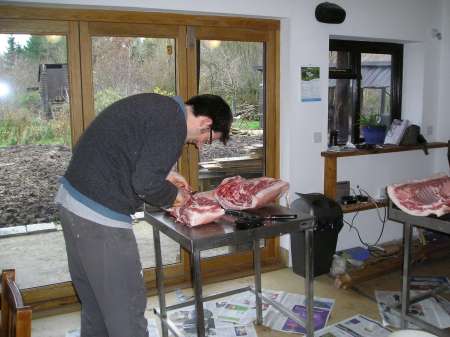
The belly and loin was put in a salting box to dry cure (The one in the picture is an old wine crate) with a layer of salt mix (see below) in the bottom, a layer between each piece of pork and a layer on the top. It was then left for 7 days for the belly and 10 days for the loin (back bacon) Each day we changed the salt and rubbed it into the meat. The first day the salt has become slush from the water it has extracted from the meat. By the last day the salt is still fairly dry.

We decided to dry cure 1 ham and wet cure the other. The ham to be dry cured was placed in a large container with a thick layer of salt mix underneath and around the sides and on top. We put a weight (a chopping board with 2 washed concrete blocks on top) on top of the salt mix and left it for 21days (3 days per kilo).

The ham that we were wet curing was put in a brine made from scrumpy cider, salt and brown sugar for 25 days. A weight was put on top of it to keep it under the liquid. After curing, this was rinsed, hung to dry and then cooked up for Christmas.

The offcuts and some of the shoulder meat was made into salami/chorizo style fermented sausage. The process of making fermented sausage seems so wrong. The meat is mixed with at least 2% salt by weight and flavourings. We made some with a little garlic and black pepper, some with more garlic and some with paprika and chilli. These sausages are then left in a warm place for at least 12 hours to start fermenting. It is worth hanging some cheap salami with them to inoculate them with the correct bacteria. This bacteria creates the white mould on the skin of the sausage. They are then moved (with the cheap salami) to an air drying unit. We made our first attempt at salami into horseshoe shapes by hanging it by both ends. This causes issues with a lack of air movement in the inside of the horseshoe shape. In future we will always hang by one end to make straight sausages.
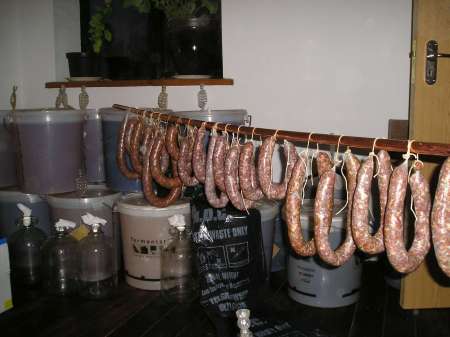
When all of the bacon and dry-cured ham was out of the salt and had air dried for a few days, we smoked it and the fermented sausage. We have an old catering trailer which we converted into a cold smoking and air drying unit. It is parked at the back (north side) of our house where it is shady and cool and is fed by a woodburner which used to heat our caravan. This is connected to the catering trailer by a length of stove pipe. We light a fire in the woodburner using charcoal and then smother it with sawdust and woodchip. We used oak. The dust and chip then slowly burns producing smoke but very little heat. It is important to keep the smoking chamber cool so that it does not start to cook the meat. The fire went out sometimes at night but we smoked it for 2 weeks. Old recipes smoke for up to 2 months as the smoking is done to preserve the meat. Modern cold smoking recipes do not tend to smoke for very long because it is just for the flavour. They then say that you should freeze the meat if you want to keep it. Smoking for 2 weeks preserves the meat and creates a very smoky flavour which is not to everyones liking but we really like it.

After smoking, the vents on the catering trailer are opened right up and 2 small fans are turned on to keep the humidity down. The meat then air dries which preserves it properly. We killed our pigs at the end of November so the catering trailer was very cold for the first few months. It was certainly colder than ideal for the fermented sausage, but this gives the pork time to air dry before the weather warms up. When the meat has lost 30% of it’s weight it is safe to eat raw and will not go off as the weather warms up. As I write this, it is summer, the bacon and ham is 7 months old and it is delicious. The bacon is hard and only needs cooking briefly or it dries right up. The air dried ham will not be ready to eat until it is 12 months old so we haven’t tasted it yet but it looks good and is trying our patience.

The views expressed in our blog are those of the author and not necessarily lowimpact.org's
2 Comments
-
1Peter Green September 4th, 2015
I think the title is misleading… It should be ‘How to preserve pork on a smallholding’.
I was somewhat disappointed to read it and see it was only about one kind of meat.
Peter
-
2Dave Darby September 4th, 2015
Fair point. Changed it.




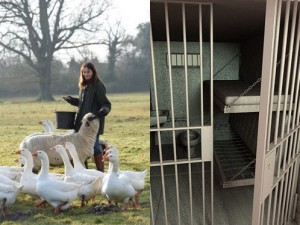 So, is having a smallholding like being in prison?!
So, is having a smallholding like being in prison?!
 Is it ethical to eat meat?
Is it ethical to eat meat?
 Keeping pigs: the story of a pig co-op
Keeping pigs: the story of a pig co-op
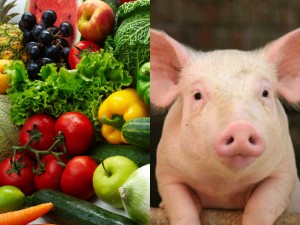 Why does our list of topics include vegetarianism, veganism AND keeping animals?
Why does our list of topics include vegetarianism, veganism AND keeping animals?
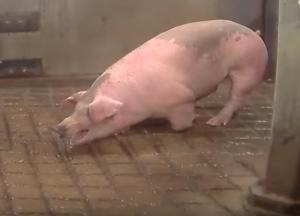 Corporate cruelty
Corporate cruelty
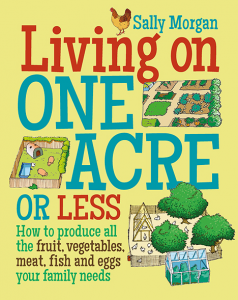 Win a copy of our partner Sally Morgan’s great new book, ‘Living on One Acre or Less’
Win a copy of our partner Sally Morgan’s great new book, ‘Living on One Acre or Less’
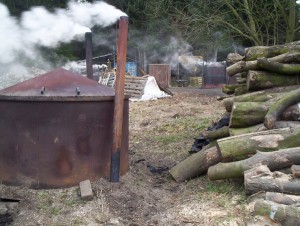 Career change? There are not enough charcoal-makers to satisfy the demand for home-produced charcoal
Career change? There are not enough charcoal-makers to satisfy the demand for home-produced charcoal
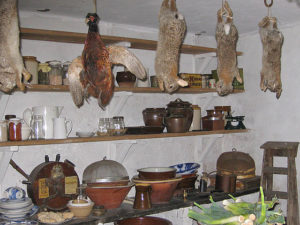 In praise of the domestic larder: an alternative to the modern fridge
In praise of the domestic larder: an alternative to the modern fridge
 A feast of fermentation: from atchara to zymology
A feast of fermentation: from atchara to zymology
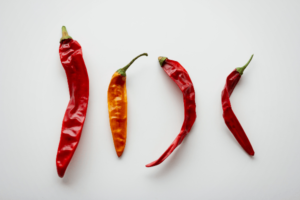 Food preservation methods to make the most of seasonal produce: Part 1
Food preservation methods to make the most of seasonal produce: Part 1
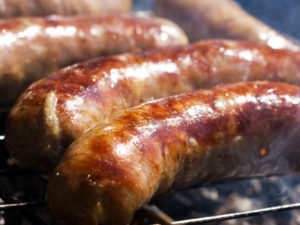 Butchery, sausages & meat
Butchery, sausages & meat
 Food smoking
Food smoking
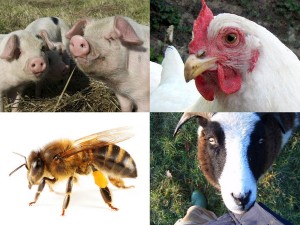 Keeping livestock
Keeping livestock
 Pigs
Pigs
 Smallholding
Smallholding


